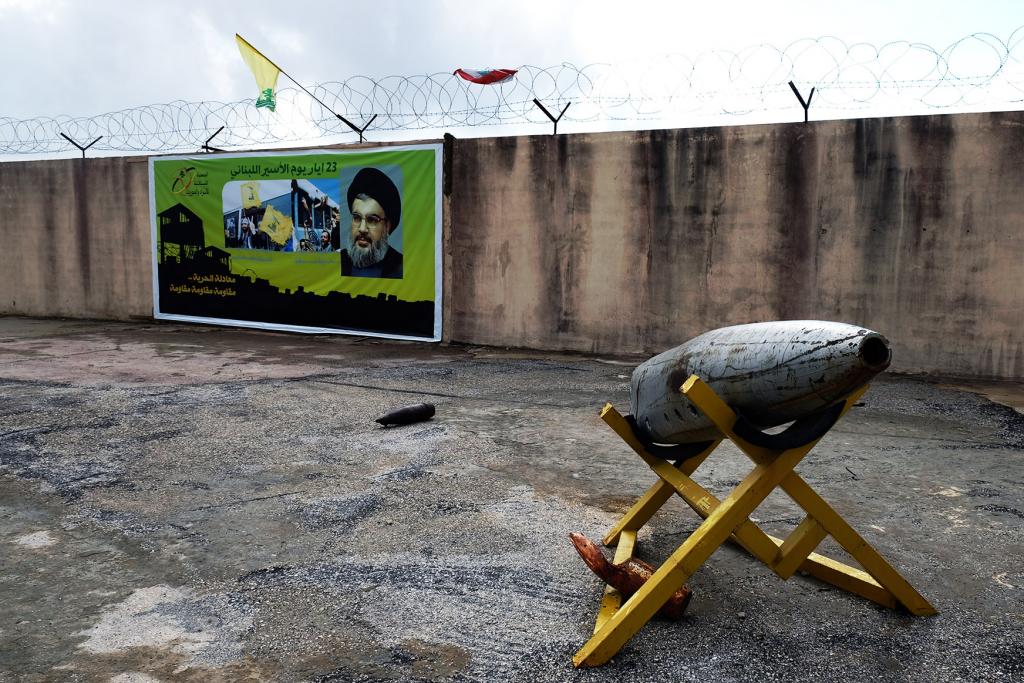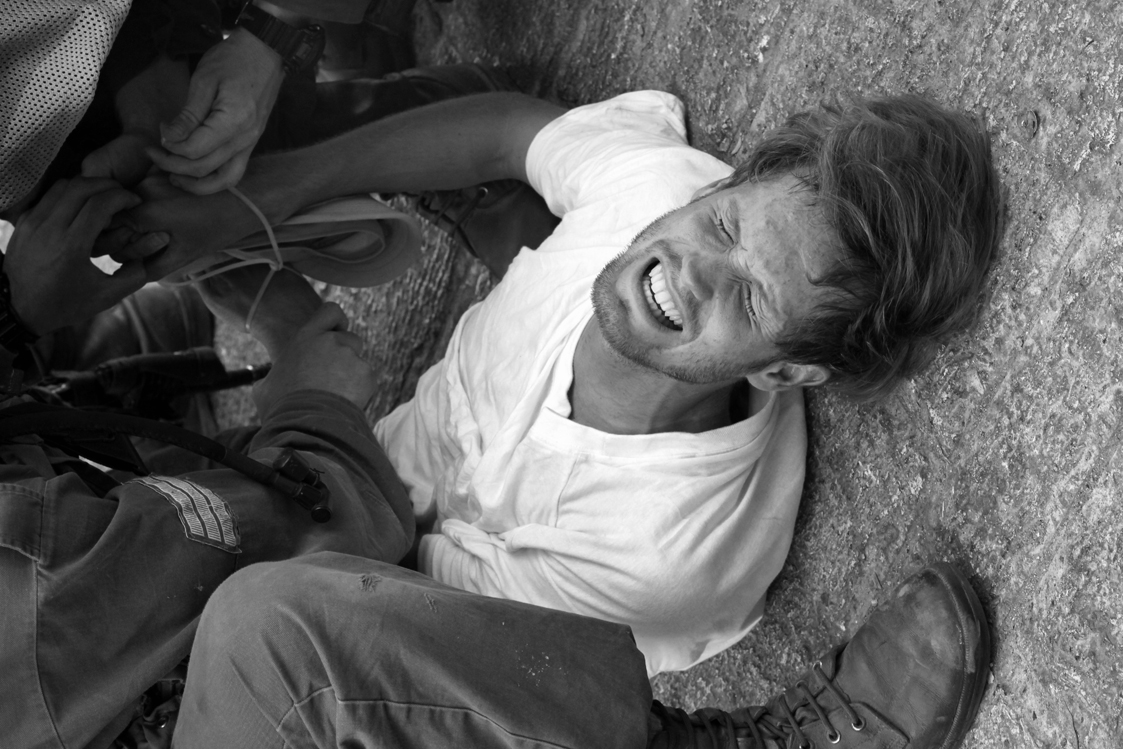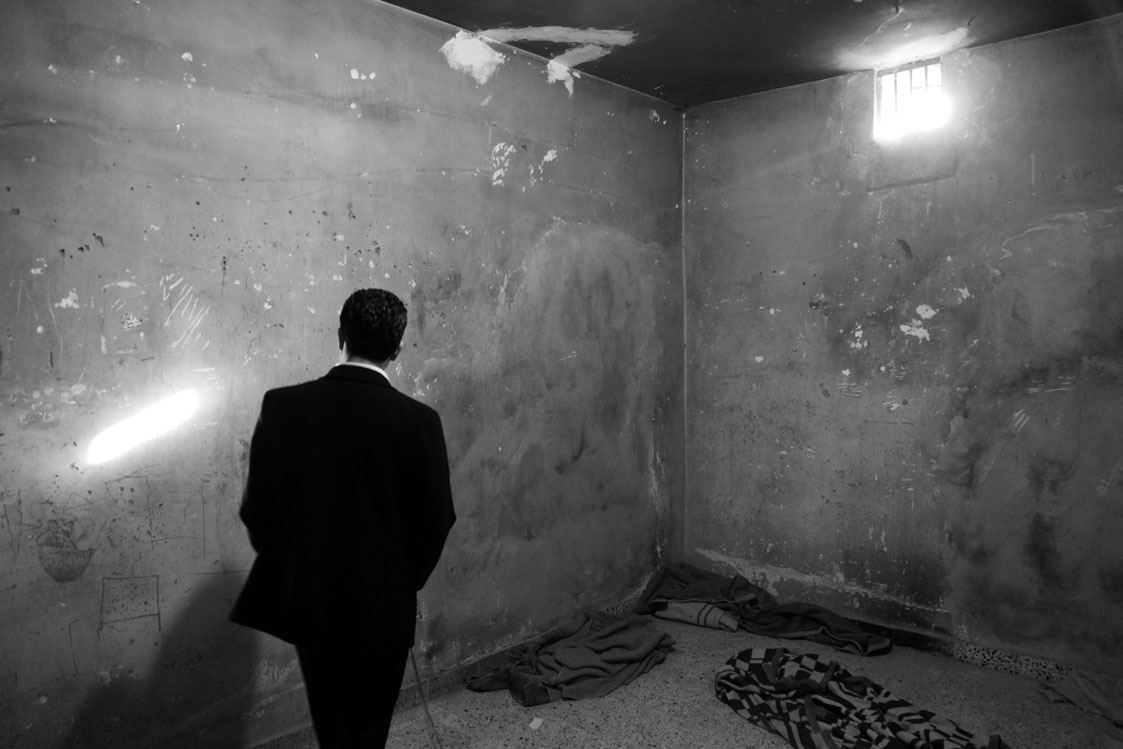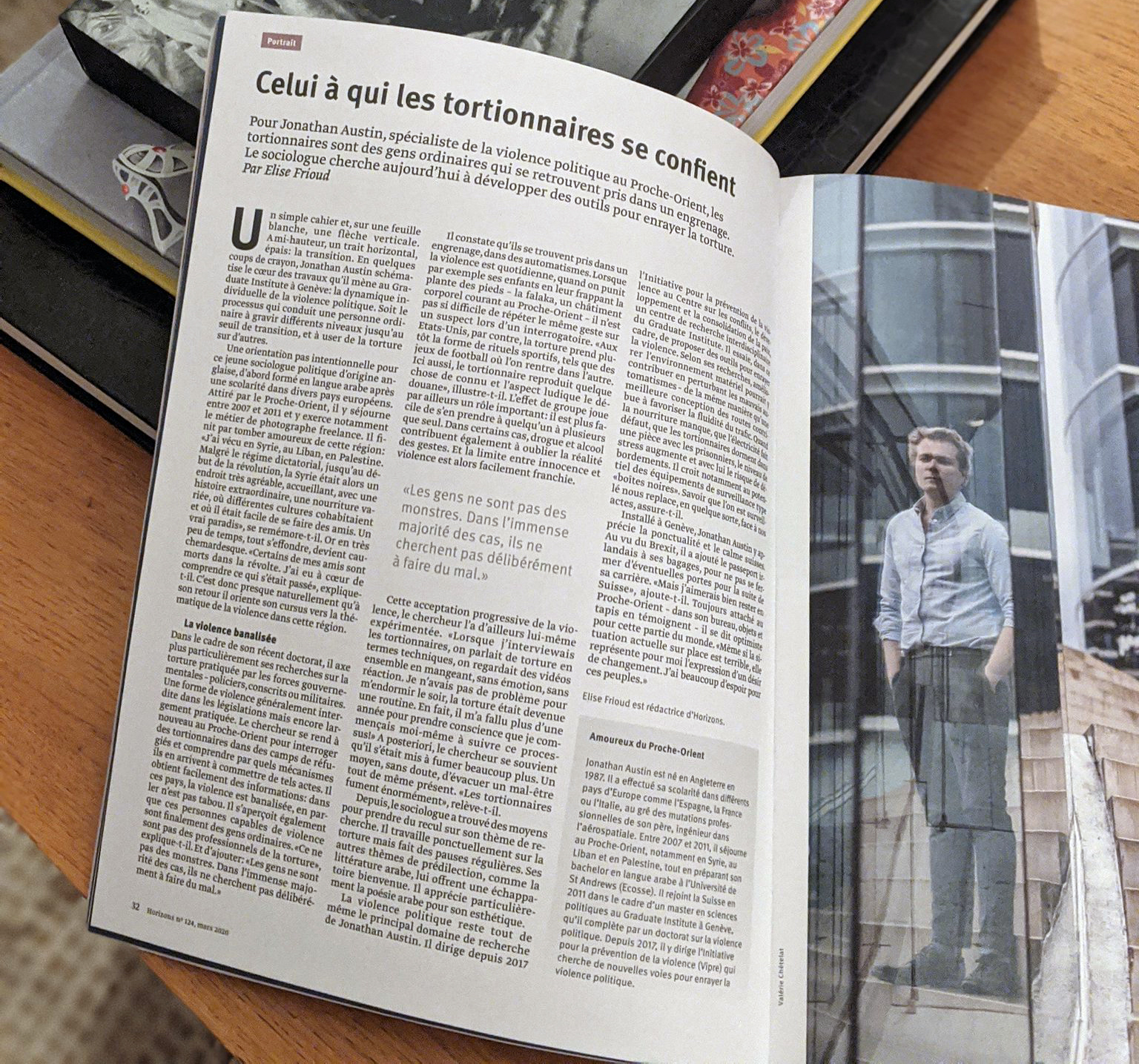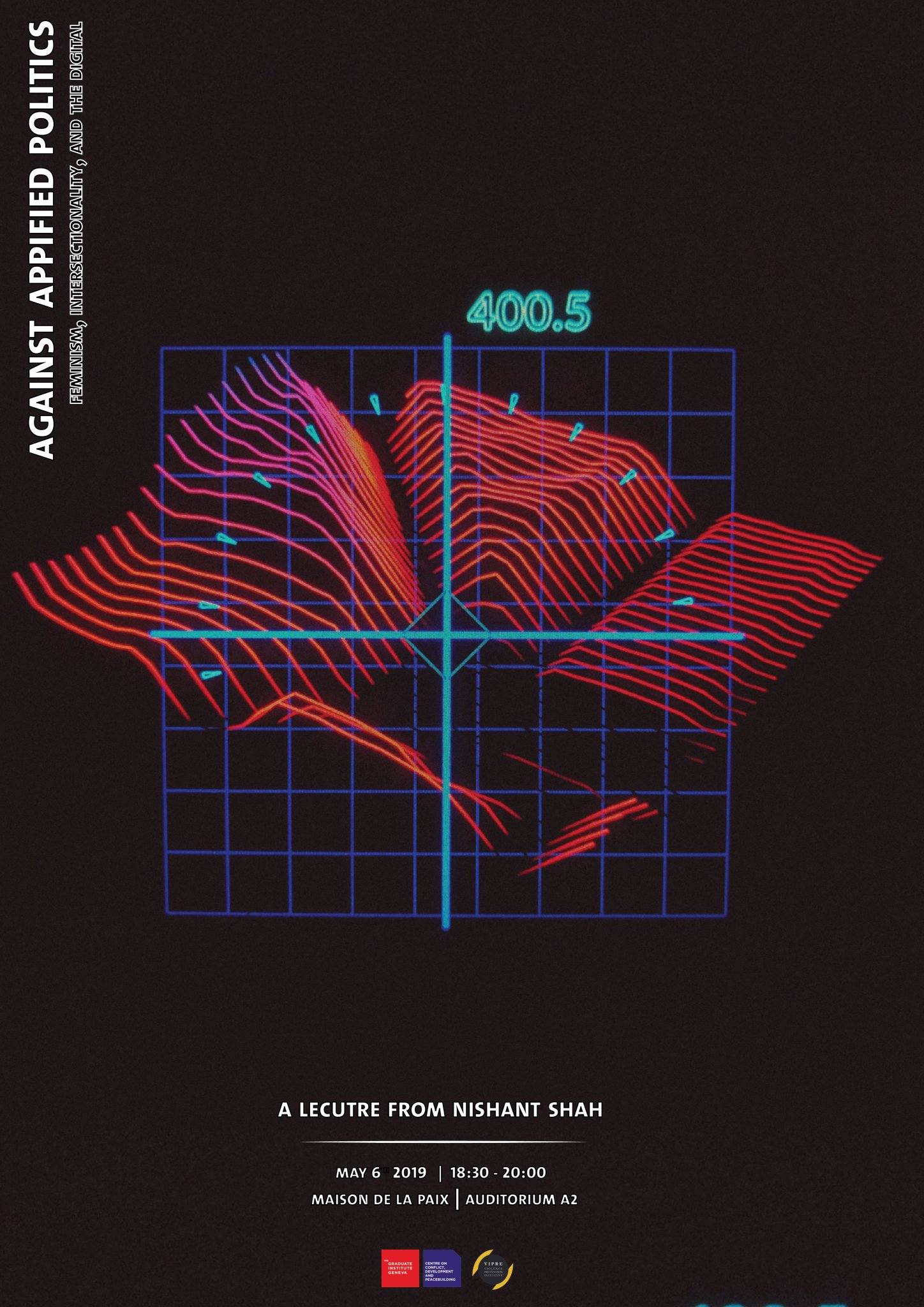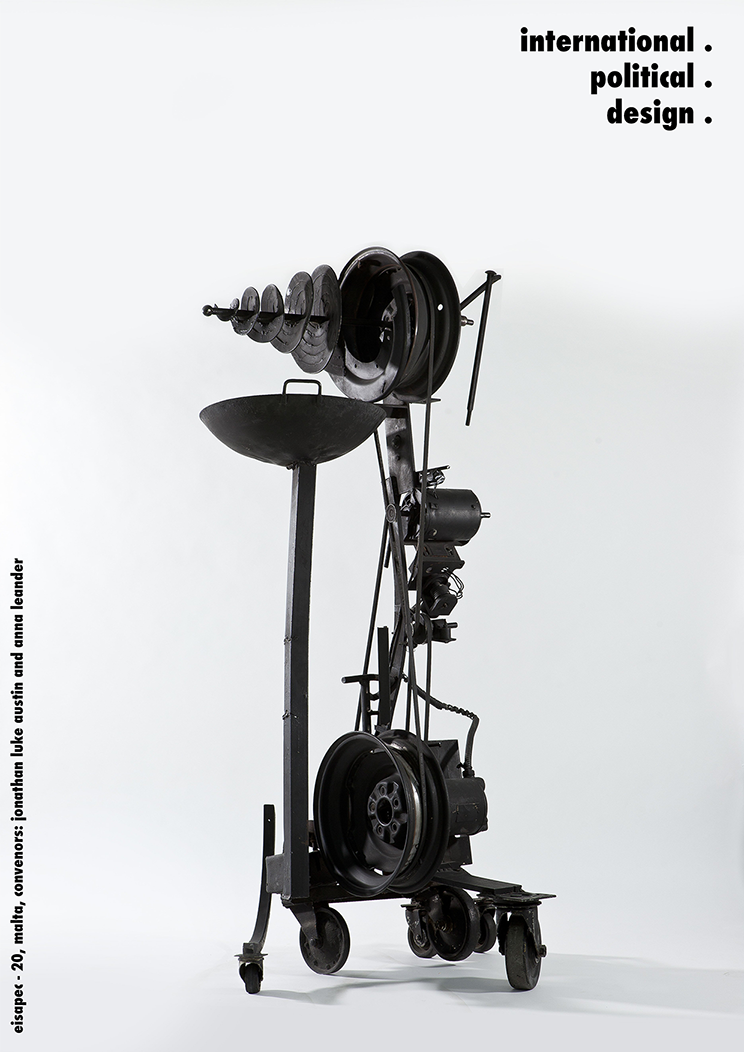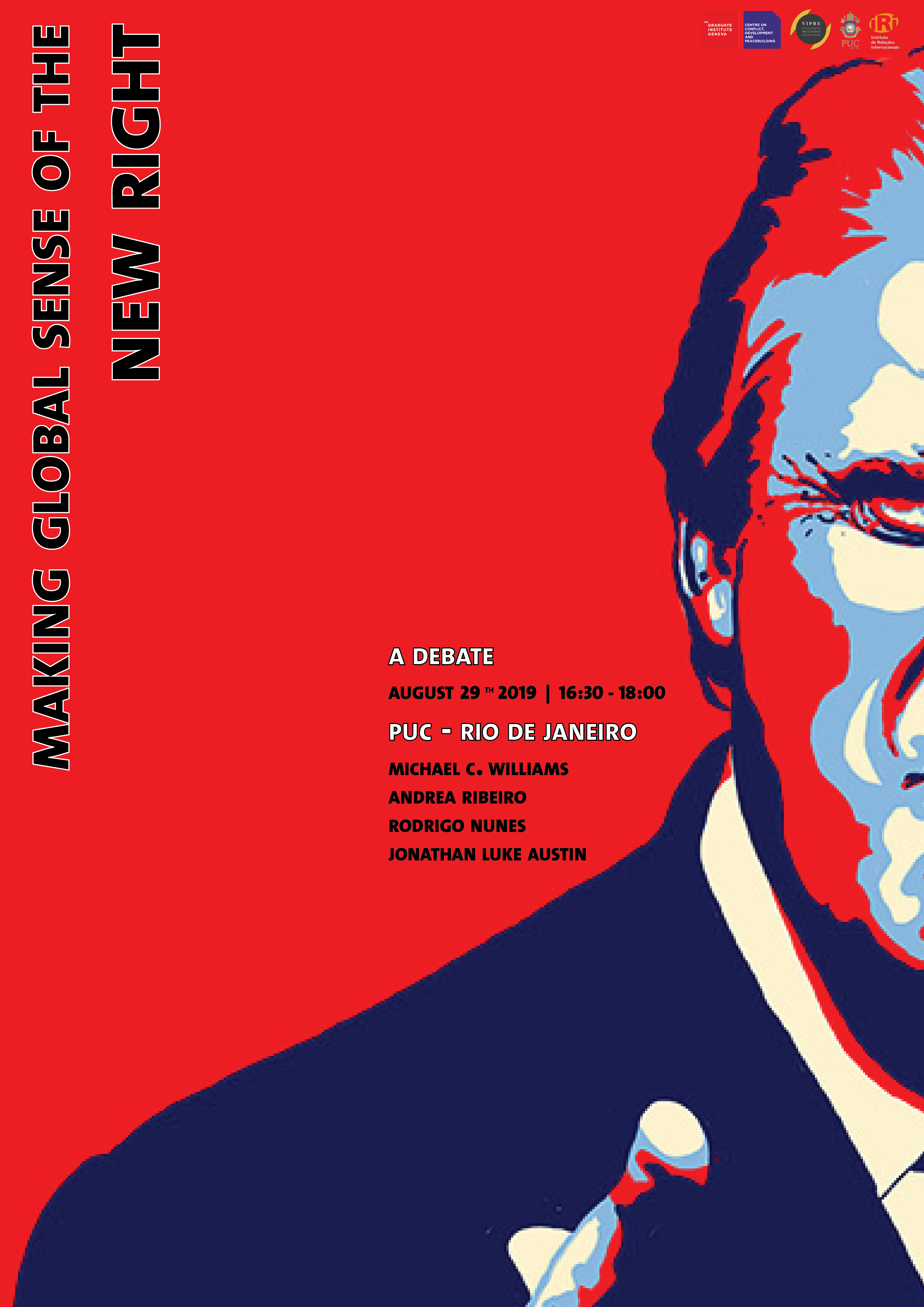Key Publications
Hot Tea with Sugar and the Translation(s) of Torture
Austin, Jonathan Luke. in Trine Villumsen Berling, Ulrik Pram Gad, Karen Lund Petersen, Ole Wæver (eds.), Translations of Security, Routledge: London, 2021, 110 - 113, Link here
In this contribution, Jonathan Luke Austin recounts how torture was translated as part of the Global War on Terror. Against the "ticking time bomb" logic, critics argued that the evil of torture aiming to prevent an unwanted future would in turn change Western democratic institutions. Nonetheless, this changing-of-"us" argument was only rarely specified. Austin then explores it and suggests that it relates to the intimate entanglement of different security cultures or cosmologies in the joint enaction of violence and, as the old saying goes, the betrayals that the translations in practices, hierarchies, and ontologies these entanglements ultimately provoked.
Designing-With/In World Politics, Manifestos for an International Political Design
Austin, Jonathan Luke, and Anna Leander. Political Anthropological Research on International Social Sciences (PARISS) 2(1), 2021: 83-154, Link here
Why is the praxis of the International Social Sciences (iss) so limited? Why are word counts and abstracts so much more integral to our quotidian workday than datasheets or color palettes? Why do we do little more than write texts and give lectures with – perhaps – the odd foray into photography or film-making? Why are we so reluctant to practically (and so not simply conceptually) engage with the full gamut of material, aesthetic, and technological making? This essay addresses these questions by advocating for the emergence of an International Political Design. It begins from the intuition that conceptual and empirical shifts across iss towards embracing the material-entanglements of world politics, the centrality of affect and emotion to human praxis, and relational ontologies of emergence, prefiguration, and complexity, all logically demand a radical re-thinking of our praxis. Specifically, we argue that limiting our activities to the alphabetical (or visual) mediation of knowledge about world politics constrains our politicality and impoverishes our conceptual and empirical vitality. Considered in conjunction with the contemporary prevalence of global violence, injustice, and oppression, we suggest that integrating a far broader range of material-aesthetic practices into iss is now an ethical imperative. Without taking up that responsibility, we abdicate the possibility of a more worldly and socially-embedded social science. Based on these core contentions, our discussion elaborates on how we might imagine an International Political Design: a conceptually rich, empirically-grounded, and ‘applied’ material-aesthetic approach to iss. We do so in the form of a manifesto or – rather – collage of manifestos that each militates, in one way or another, towards the necessity of designing-with/in world politics.
The Departed Militant: A portrait of joy, violence, and political evil
Austin, Jonathan Luke. Security Dialogue, 51 (6), 2020 Link here
This is an essay about the personhood of militant violence, the phenomenological underpinnings of political evil and the friendship between two men. It begins by recounting the author’s street-side meeting with several Islamist militants in Tripoli, Lebanon, one of whom later described his preparations to become a ‘martyr’ in Syria. The essay takes my conversations with this man and his friends as a means of exploring the becoming of violent militancy as a fundamentally creative and essentially joyful series of encounters that lead to the emergence of extreme violence. To do so, I read the narrative account at the centre of the essay through the concept of social and political ‘fracturing’, which is described as the process through which individuals or groups are able to transcend traditional limits on knowledge, action and belief. This discussion of social and political fracturing is then brought into conversation with the question of what constitutes social or political evil in order to demonstrate that debates over what produces violent militant mobilization have generally missed the crucial relevance of a set of small, intimate and embodied rituals that suffuse evil, violence and war-fighting more generally with a fundamentally positive (yet eventually destructive) phenomenology.
In Reply: Emancipation and Critique in Peace and Conflict Research
Krause, Keith. Journal of Global Security Studies 5 (4), 2020: 708–709, Link here
Keith Krause proposes a brief reply, in the spirit of dialogue, to the commentary piece by Isak Svensson. Svensson makes some valid points. His main axis of response is that “peace research has always been critical” and is “value-based,” yet he sidesteps some of Keith Krause's key points regarding the nature of “valid knowledge,” pluralism in research traditions, and the ethical-political dimension of peace research.
Posthumanism and Perpetrators
Austin, Jonathan Luke. in Susanne C. Knittel and Zachary J. Goldberg (eds), The Routledge International Handbook of Perpetrator Studies, Routledge, 2021, Link here
This contribution explores the implications of posthuman social theory for Perpetrator Studies. It lays out how posthuman social theory expands our understanding of the perpetration of violence by adding an appreciation of how the non-human makes significant difference in why, how, and when human beings become perpetrators. Specifically, I show how everyday (i.e., chairs, tables, etc.) and more technologically advanced objects (radios, rifles, etc.) can possess independent agency over human behavior in three important ways. First, I show how material objects contain scripts for violence that subconsciously hint at the perpetration of violence. Second, I argue that these objects circulate freely across borders to unintentionally spread particular patterns of perpetrating violence globally. Third, I demonstrate how non-human objects and their scripts also contain “affective” capacities that, more than suggesting or directing violence, can be seen as “forcing” human beings to perpetrate violence. Each of these claims is supported by evidence collected during interviews conducted with Syrian torturers. Taken together, I argue that Perpetrator Studies can gain from integrating these claims into an understanding of the material-semiotic “taskscape” of violence that provides a nuanced understanding of the ways in which violence is “more than human” in its coordinates.
Emancipation and Critique in Peace and Conflict Research
Krause, Keith, Journal of Global Security Studies 4(2), 2019: 292–298, Link here
This contribution examines how the critical potential of research on peace in International Relations has been simultaneously marginalized and transformed. It briefly traces the evolution of peace research, as well as choices, contestation, and breaks in the construction (and “disciplining”) of peace and conflict research. It then focuses on two epistemological and normative choices that occlude the emancipatory potential of peace research and marginalize certain approaches to the study of the causes of war and conditions of peace. In a more positive vein, it illustrates, with examples from recent research, where potentially emancipatory or transformative scholarship on building peace has migrated.
Technologies of Violence
Krause, Keith, in conversation with Myriam Dunn Cavelty and Jonas Hagmann, in: Kaltofen C., Carr M., Acuto M. (eds) Technologies of International Relations Palgrave Pivot, Cham, 2019, Link here
In this written transcript of a conversation with Keith Krause, Professor at the Graduate Institute of International and Development Studies (IHEID) in Geneva, Switzerland, Director of its Centre on Conflict, Development and Peacebuilding (CCDP), and—until 2016—Programme Director of the Small Arms Survey, central aspects of the contemporary use and study of technologies of violence are highlighted. The ways in which technology informed Keith’s research and how it altered the character of international violence are addressed, before the conversation moved to how technology affects patterns of knowledge creation and dissemination in the IR discipline more generally.
Accessing Lifeworlds: Getting People to say the Unsasyable
Austin, Jonathan Luke , in Marieke De Goede (ed.), Secrecy and Methodology in Critical Security Research, London: Routledge, 2019, Link here
This chapter offers a reflective discussion of the gender-related opportunities and pitfalls associated with research on security and secrecy. It explores researchers who want to reflect on questions of ethics and critique in research on security and military institutions. The chapter addresses in relation to secrecy and methods is not simply to ask questions about how gender relations can help provide or limit access to information. It examines feminist literature on secrecy and focuses on what a feminist lens allows to see with regards to questions of navigating access and conducting field research in the context of secrecy and danger. The chapter provides a reflective discussion of how we can engage with questions of ethics and critique in the context of research on security and secrecy, drawing on recent work in the field of critical military studies in particular.
Towards an International Political Ergonomics
Austin, Jonathan Luke. European Journal of International Relations, 25 (4), 2019: 979-1006, Link here
This article introduces International Political Ergonomics. International Political Ergonomics is a novel research programme focused on achieving political change through the ergonomic (re)design of world politics. The approach is grounded on a shift across International Relations which recognizes that its epistemic (i.e. knowledge producing) core is often inadequate to achieve change. Insights from the practice turn and behaviouralist International Relations, as well as from philosophy, sociology and neuroscience, demonstrate that much international behaviour is driven by the ‘unconscious’ or ‘non-reflexive’ re-articulation of repertoires of actions even where the pathologies of this process are known. This implies that knowledge production and dissemination (i.e. to policymakers, global publics) is often unable to effect influence over social practices. What is thus required is a non-epistemic means of producing world political change. International Political Ergonomics is a research programme that takes up this task. It does so by describing how small material interventions into world politics can radically shift individual behaviours by encouraging greater rationality, reflexivity and deliberation. After laying out the theoretical basis for this claim, the article demonstrates it by detailing the application of International Political Ergonomics to violence-prevention efforts. The article concludes by reflecting on the radical implications that International Political Ergonomics has for the vocation of International Relations.
Sticky security: the collages of tracking device advertising
Leander, Anna. European Journal of International Security, 4 (3), 2019: 322-344 Link here
In security studies and beyond, technological developments are associated with technocratic, rationalistic, transparent forms of security governed from a distance. In much of the advertising of tracking devices the associations made are very different, even opposed, to this perspective. The advertising composes security anchored in sensemaking and resonance rather than calculus and reason, working from within and below rather than from a above at distance and depending on the negotiation of opaque co-presences rather than the establishment of precision and transparency. The consequence is that advertising not only extends but also deepens the grip of military/security matters: making them sticky. Moreover, the heterogeneity of the elements is such that what is composed is a shifting collage rather than a stable composition. This argument makes a threefold contribution to security studies: a theoretical reconceptualisation of what it means to compose security, an empirical intervention in the debates surrounding the politics of tracking devices and a methodological intervention in favour of collaborationist research strategies.
A Parasitic Critique for International Relations
Austin, Jonathan Luke. International Political Sociology 13 (2), 2019: 215–231, Link here
This paper introduces the concept of a “parasitic critique.” It begins by theorizing the ethico-political positionality of “critical” researchers by speaking with Michel Serres to introduce the figure of the parasitic-researcher. That device explores a tension in critical research between hearing “thick” descriptions of our interlocutors’ lifeworlds before channeling them into “thin” metatheoretical accounts. The paper argues that this dilemma relates to the rhetorical “style” of critical approaches in IR, which employ a certain “suspicious hermeneutics” that is unwilling to take seriously the voices of particular interlocutors. By contrast, a parasitic critique is laid out as a critical orientating sensibility focused on reordering the methods of critique, with the hope of cultivating a non-judgmental ethic of “care-full” analysis and description. This argument is made by drawing out one “lay” critical theory of political violence that sees critique make a three-fold switch from suspicion to learning, exclusion to combination, and contradiction to composition. Throughout, these claims are nested within self-reflections on work interviewing both victims and perpetrators of torture, which demonstrate—often uncomfortably—how it is necessary to find points of critical sympathy between the subjugator and the subjugated that can be leveraged for the ethico-political good.
Doing and mediating critique: An invitation to practice companionship
Austin, Jonathan Luke, Rocco Bellanova, Mareile Kaufmann. Security Dialogue. 50 (1), 2019 3-19, Link here
What does it mean to study security from a critical perspective? This question continues to haunt critical security studies. Conversations about normative stances, political engagement, and the role of critique are mainstays of the discipline. This article argues that these conversations tend to revolve around a too disembodied image of research, where the everyday practice of researchers is sidelined. But researchers do do research: they work materially, socially, and cognitively. They mediate between various feedback loops or fields of critique. In doing so, they actively build and exercise critique. Recognizing that fact, this article resists growing suggestions to abandon critique by, first, returning to the practice of critique through the notion of companionship. This permits us to reinvigorate our attention to the objects, persons, and phenomena through which critique gains inspiration and purpose, and that literally accompany our relationship to critique. Second, we explore what happens when our companions disagree, when critique faces controversies and (a) symmetries. Here, we support research designs of tracing credibility and establishing symmetries in order to move away from critique as denouncing positions we disagree with. Third, we discuss the relation between companionship, critique, reflexivity, and style. Here, the rhetorical practices of critical inquiry are laid out, and possibilities for its articulation in different and less silencing voices are proposed.
Contracting Security: Markets in the Making of MONUSCO Peacekeeping
Leander, Anna, Elke Krahmann. International Peacekeeping 26(2), 2019: 165-189, Link here
Private military and security companies (PMSCs) are increasingly contracted to provide security in international peacekeeping missions. Yet, we know very little about the practical implications of this development. How do PMSCs reinforce and shape security management within UN peacekeeping operations, and what are the consequences for UN missions and their host populations? To answer these questions, we explore the operational, representative and regulatory security practices in the UN operation in the Democratic Republic of Congo (MONUSCO). Our findings show how seemingly uncontroversial, even benign security practices can have unintended negative consequences. Specifically, we observe that the participation of security firms in MONUSCO's security management contributes to three developments: the differentiation of security between staff and locals, the hardening of MONUSCO's security posture, and the perpetuation of insecurity through the emergence of a local security economy. Contracted security is thus involved in reproducing forms of security that are in some ways diametrically opposed to the aims of the mission to protect civilians and facilitate a sustainable peace.
Assembling Exclusive Expertise
Knowledge, Ignorance and Conflict Resolution in the Global South
Leander, Anna and Ole Waever (eds.), London: Routledge, 2018, Link here
This book looks at the worlding of the Global South in the process of assembling conflict resolution expertise. Anna Leander, Ole Waever and their contributors pursue this ambition by following the experts, institutions, databases and creative expressions that are assembled into conflict resolution expertise in the Global South. Expertise shapes how conflcits in the Global South are understood and consequently dealt with. Yet, expertise is always and necessarily exclusive. The exclusivity of expertise refers both to the fashionable, the sophisticated and what counts, and also to the exclusion of some people or views. Assembled from a wealth of competing knowledges expertise is always both knowledgeable and ignorant. The ambition of the volume is to explore how this exclusive expertise is assembled and in what ways it is therefore knowledgeable and ignorant of knowledges in/of the Global South.
Understanding the grammar of the city
Urban safety and peacebuilding practice through a semiotic lens
Austin, Jonathan Luke, Oliver Jütersonke. in Achim Wennmann, Oliver Jütersonke (eds.) Urban Safety and Peacebuilding. New Perspectives on Sustaining Peace in the City, 2018, Link here
This opening chapter seeks to clarify the commonalities, differences, and intersections between urban safety and peacebuilding practice. The authors explore how the symbiotic relationship between the public sphere of urban government (urban safety) and the generally more informal processes of conflict prevention, mitigation, and transformation (peacebuilding) can be harnessed in conjunction rather than in contradistinction to each other. Building on insights from semiotics, the chapter seeks to offer minimalist ideal-type definitions of urban safety and peacebuilding – conceptualizations that benefit from the medical differentiation between curative and palliative care. It constructs a heuristic typology of urban safety and peacebuilding initiatives vis-à-vis their levels of analysis, models of intervention, institutional foci, and the problems they deal with, before ending on a discussion of the level of aggregation (or granularity) of urban interventions as well as the level of politicization to which such activities are subject.
The Politics of Legal Arrangements: The “Duty of Care.” Justifying, Extending, and Perpetuating the Public-in-the-Private Forms of Protection
Leander, Anna. Indiana Journal of Global Legal Studies 25(1), 2018: 265-289, Link here
This article explores the place of formal legal arrangements in the politics surrounding the hybrid, enmeshed public-in-the-private forms of authority this special issue focuses on. It does so by analyzing the significance of one specific legal arrangement, the Duty of Care, for the politics surrounding public-in-the-private forms of protection. I show that the Duty of Care does considerable political work. It contributes to decentering, commercializing, and depoliticizing protection. In so doing, the Duty of Care is justifying this specific form of protection, defining and extending its scope, and perpetuating it. The article makes this argument by drawing both on the legal discussion about the Duty of Care and on close observation of its presence in the Security and Counterterrorism Expo trade fair. It concludes that acknowledging the politics of the Duty of Care requires shifting the focus and divisions currently organizing debates about the regulation of commercial security as well as about managerialism in international law more generally.
Making markets responsible: revisiting the state monopoly on the legitimate use of force
Leander, Anna. in Ori Swed and Thomas Crosbie (eds), The sociology of privatized security, New York: Palgrave Macmillan US, 2018, Link here
The normalization of commercial security epitomized by the disappearance of the term mercenary has gone so far that the main significance of the State Monopoly on the Legitimate use of Force (SMLF) has become one of obscuring the ongoing transformations towards ever-increasing commercial authority over the use of force, an authority enmeshing the public and the private with each other. This is my main argument. I make it an argument by suggesting first that the SMLF be treated as a practical category. I then proceed to show that as such SMLF has little practical pertinence for the governance of the use of force except as a reassuring, soothing background reference. I do this through an analysis of the argumentation through which a district court in Oslo defines appropriate security provision in a case where a Canadian aid worker demanded (and obtained) compensation for not having been well enough protected by his employer, the Norwegian Refugee Council (Dennis v. NRC). Borrowing Ghassan Hage’s terms and distinctions between anti- and alter-politics, I then suggest that the obscuring of commercial authority through the SMLF is undermining the anti-politics of contesting relations of domination in security politics, and in so doing it is also narrowing the scope for alter-politics of re-inventing security politics. I conclude that redirecting attention to the SMLF and the political work it does is therefore essential for coming to terms with the politics of commercial security.
(De)securitisation dilemmas: Theorising the simultaneous enaction of securitisation and desecuritisation.
Austin, Jonathan Luke, Philippe Beaulieu-Brossard. Review of International Studies 44(2), 2018: 301-323. Link here
This article theorises the simultaneous enaction of securitising and desecuritising moves. It argues that the frequent simultaneity of these two processes, which are normally considered mutually exclusive within Securitisation Theory (ST), has previously gone unnoticed given a set of methodological, temporal, and ontological biases that have developed within ST. Demonstrating how these biases can be overcome – and even reconciled with the seminal texts of ST – by drawing on work from within social theory and elsewhere, we argue that the frequent simultaneity of (de)securitising moves most urgently requires us to reconsider the normative status of desecuritisation within ST. Although desecuritisation has traditionally been viewed as normatively positive, we argue that its temporally immanent enaction alongside securitising moves might introduce more violence into security politics and, in fact, exacerbate protracted conflicts. Ultimately, we make the normative ambitions of some within ST more opaque. Desecuritisation is not a shortcut to the ethical-political good within ST.
Becoming a torturer: Towards a global ergonomics of care
Austin, Jonathan Luke and Bocco, Riccardo, International Review of the Red Cross, 98 (903), 2017: 859-888 Link here
How do people become torturers? And how do we stop that transformation? This article addresses these questions by calling on academics and practitioners to consider caring for – expressing sympathy, understanding, and working with – the figure of the “not-quite-yet” torturer. We begin by noting the globality of torture across space and regime type, and suggest that this globality indicates how torture is – very frequently – not the result of any decision or order. This is followed by a discussion of the “consciousness” of the torturer vis-à-vis (1) their paradoxical emotional scarring by their own actions, and (2) their frequent descriptions of having, indeed, never themselves “intended” to torture someone. Drawing on recent developments in the theory of consciousness, we then argue that this non-purposeful enaction of torture can be understood in terms of certain somatic markers that lead, in particular material-situational settings, to people slipping towards violence. Drawing on the theory of the emergence of violence put forward by Jonathan Luke Austin, we then sketch out more fully the process of becoming a torturer in terms of the situational and material dynamics that encourage these slippages, as well as a global circulatory system of violent knowledges through various sources that become activated in particular settings. We thus suggest that becoming a torturer is more a process of transition than of decision, before noting that this distinction is often lost in the cultural cycle of torture that emerges once torture has begun. Finally, we move to outlining the implications of this non-purposeful understanding of torture by arguing for a new preventive strategy based on the principles of ergonomics and modifying the training regimes of the most common professions from which torturers emerge (the military, the police, etc.) in order to make it harder to slip towards violence. We suggest, ultimately, that this strategy of prevention requires placing ourselves in the uncomfortable position of working to care for both the becoming-torturer and the torturers themselves, in order to help them both preserve their own humanity.
We have never been civilized: Torture and the materiality of world political binaries
Austin, Jonathan Luke. European Journal of International Relations 23 (1), 2017: 49-73, Link here
This article demonstrates how world political binaries (democratic–autocratic, civilized–barbarian, etc.) are materially, as well as ideationally, constructed. By drawing on the analytical sensibilities of Actor-Network Theory, it is shown that differences in the actions, practices and/or behaviours of states usually situated at one or another extreme of socio-political dichotomies are sometimes dependent only on the availability of, and/or global inequalities in, mundane material ‘allies’, such as airplanes, sedatives and military bases. Empirically, the article evidences this claim by constructing a comparative case study of the Argentine torture regime and ‘Death Flights’ programme (c. 1975–1983) and the post-9/11 US-led ‘extraordinary rendition’ programme. By describing the contours of each case in microsociological detail, I suggest that differences in the forms of violence enacted in these two cases (both involving torture but one resulting in death and the other indefinite detention) were not related to the democratic or ‘civilized’ status of the US and the authoritarian or fascist-cum-barbarian status of Argentina (and the subjective motivations that we attribute such binary signifiers), but, rather, to differences in the agencies of the non-human object of the aircraft available in each case. These empirical findings allow the article to affirm the value-added of Actor-Network Theory’s ‘reconstructive’ method in International Relations for: 1) ‘mangling’ power-saturated world political binaries without relying on critical ‘deconstruction’; 2) revealing the ever-present material-semiotic fragility of those dualisms; and 3) unveiling the ideational ‘purifications’ that sustain dichotomies in spite of their often lacking an empirical basis through a refusal to engage with materiality.
Business engagement in violence prevention and peace-building: the case of Kenya,
Austin, Jonathan Luke, Achim Wennmann. Conflict, Security & Development 17(6), 2017:451-472, Link here
Kenyan business was important in mitigating episodes of election violence in 2007–2008 and 2013. This article finds that this role was motivated by the ethical and moral commitments of key business leaders to further peace in times of violence; and by interests in preventing future economic loss. However, by adopting a lens that situates business roles in violence prevention and peace-building within Kenya’s conflict systems and political economy, the article finds a paradox: this lens confirms the Kenyan ‘success story’ with respect to specific violent episodes; but it also reveals a much more limited role for business in transforming the underlying sources of conflict; especially when these are congruent with key business fundamentals connected to land ownership, property rights, export-oriented production or services, or a ‘limited’ access order. Overall, the article highlights that business should leverage its comparative advantages within broader multi-stakeholder coalitions, especially in terms of its ability to influence political leaders, entry-points for informal dialogue to diffuse crises and capital to support peace-building initiatives.
Digital/commercial (in)visibility: The politics of DAESH recruitment videos.
Leander, Anna. European Journal of Social Theory 20(3), 2017: 348-372, Link here
This article explores one aspect of digital politics, the politics of videos and more specifically of DAESH recruitment videos. It proposes a practice theoretical approach to the politics of DAESH recruitment videos focused on the re-production of regimes of (in)visibility. The article develops an argument demonstrating specifically how digital and commercial logics characterize the aesthetic, circulatory, and infrastructuring practices re-producing the regime of (in)visibility. It shows that digital/commercial logics are at the heart of the combinatorial marketing of multiple, contradictory images of the DAESH polity in the videos; that they are core to the participatory, entrepreneurial, individualized and affective processes of contagion determining whom the videos reach and involve; and that they shape the sorting, linking, flagging and censoring of the videos that define their accessibility on the internet. The theoretical and political cost of overlooking these digital and commercial characteristics of DAESH visibility practices are high. It perpetuates misconceptions of how the videos work and what their politics are and it reinforces the digital Orientalism/Occidentalism in which these misconceptions are anchored.
Bodies count: the politics and practices of war and violent death data
Krause, Keith. Human Remains and Violence: An Interdisciplinary Journal 3(1), 2017: 90-115, Link here
In discussions of conflict, war and political violence, dead bodies count. Although the politics and practices associated with the collection of violent-death data are seldom subject to critical examination, they are crucial to how scholars and practitioners think about how and why conflict and violence erupt. Knowledge about conflict deaths – the ‘who, what, where, when, why and how’ – is a form of expertise, created, disseminated and used by different agents. This article highlights the ways in which body counts are deployed as social facts and forms of knowledge that are used to shape and influence policies and practices associated with armed conflict. It traces the way in which conflict-death data emerged, and then examines critically some of the practices and assumptions of data collection to shed light on how claims to expertise are enacted and on how the public arena connects (or not) with scholarly conflict expertise.


